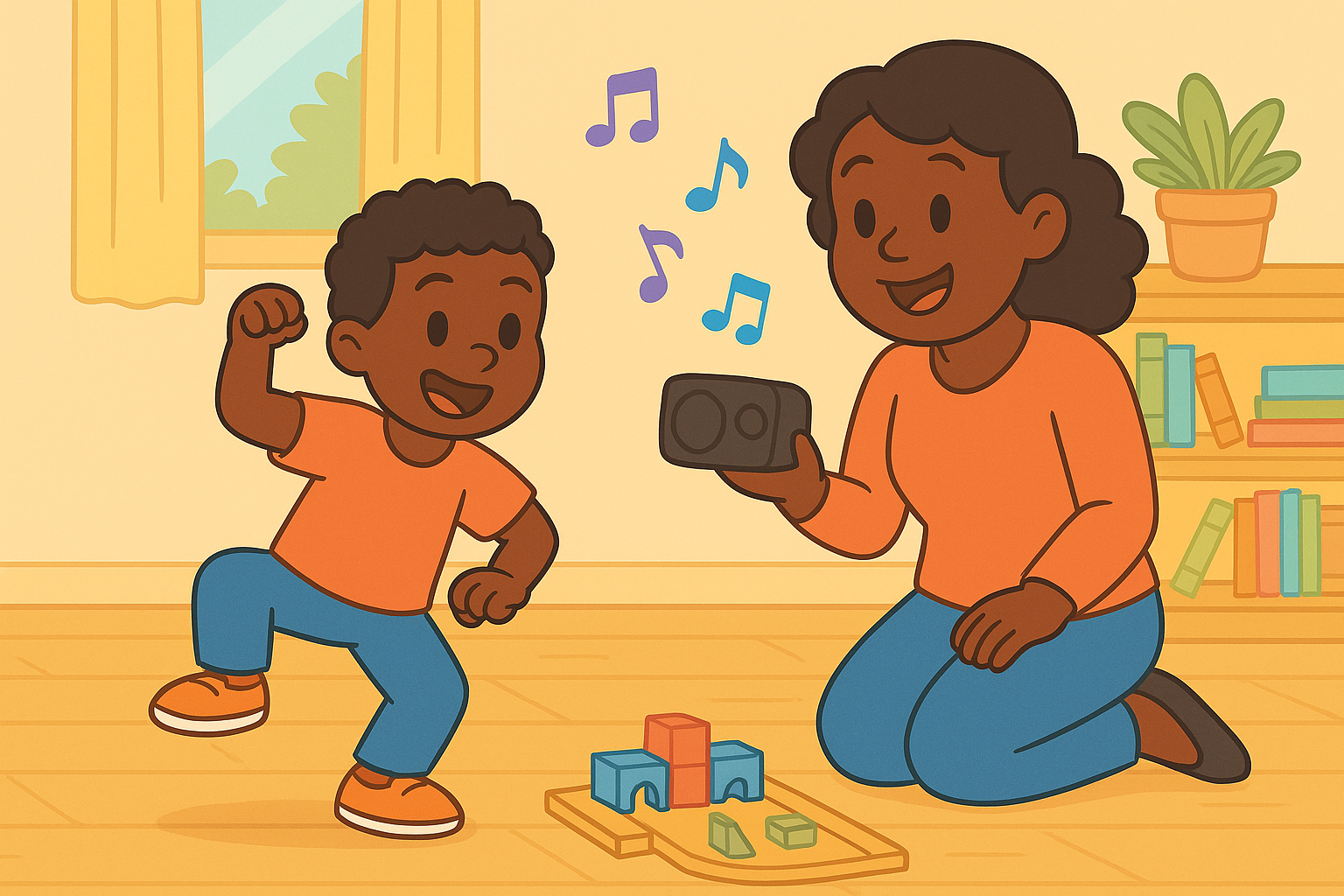Using Play to Build Executive Function Skills
Using Play to Build Executive Function Skills
What Are Executive Function Skills (In Kid-Friendly Terms)?
Executive function skills are like the control center of the brain. They help children:
stay focused on a task
manage impulses
remember instructions
shift ideas when something changes
plan next steps
Kids don’t develop these skills overnight — they grow them through real play.
Parents often notice executive function skills showing up when children:
wait for their turn,
follow simple steps,
pause before grabbing,
stick with a challenge.
Why Play Is the Perfect Training Ground
Real play exercises the brain the way running exercises muscles.
Through play, children practice:
working memory (What was I building again?)
inhibitory control (Wait your turn!)
cognitive flexibility (Let’s try a new plan!)
Play isn’t a break from learning — it is learning.
Step 1: Teach Working Memory Through Sequenced Play
Working memory helps children keep information in mind long enough to use it.
Try:
“Build a tower, then add a bridge.”
“Put the toy in the basket, then close the lid.”
As children complete multi-step tasks, they train their brain’s storage system.
(Try this too: Teaching Patience and Focus Through Turn-Based Play)
Step 2: Build Cognitive Flexibility With Pretend Play
Pretend play helps children:
shift roles,
adapt ideas,
accept new rules.
Example:
Today the living room is a zoo!
Tomorrow it’s a dentist office.
Flexibility helps children cope with classroom changes, schedule shifts, and new routines.
(Related read: The Role of Imaginative Play in Vocabulary Expansion)
Step 3: Strengthen Inhibitory Control With Turn-Based Games
Impulse control is learned — not natural.
Games like:
“Red Light, Green Light”
“Freeze Dance”
“Simon Says”
…teach children to pause before reacting.
When kids learn to wait, they gain power over their impulses.
(Also see: How to Make Learning Transitions Fun and Predictable)
Step 4: Use Puzzles for Planning & Persistence
Puzzles strengthen:
planning,
spatial awareness,
patience,
problem-solving.
Try narrating:
“Let’s find the corner pieces first.”
You’re modeling planning language without directing the outcome.
Step 5: Encourage Building Challenges
Blocks and loose parts encourage:
trial and error,
measurement,
adjusting on the fly.
Try:
“Can you build a bridge that holds a toy car?”
If it falls? That’s the best learning moment of all.
(Related read: Encouraging Resilience Through Early Challenges)
Step 6: Practice Organization Through Clean-Up Play
Sorting toys by:
type,
size,
color,
category…
…strengthens cognitive organization.
Try:
“Let’s put the animals together.”
“Cars go in this bin; blocks go in that one.”
Suddenly, cleanup becomes built-in brain training.
(Try this too: Introducing Graphing and Sorting at Home)
Step 7: Use Routines to Support Task Initiation
Struggle starting tasks? Totally normal.
Simple routines prompt initiation with familiarity.
Examples:
a song when brushing teeth,
a visual schedule in the hallway,
a morning flow of 3–5 steps.
Predictability reduces overwhelm.
Step 8: Build Emotional Control Through Puppet Play
Puppets help children:
rehearse calm responses,
practice words,
problem-solve social conflicts.
It feels safe when the puppet struggles instead of them.
(Also see: The Power of Naming Emotions in Early Learning)
Step 9: Flex Working Memory With Story Retelling
Ask:
“What happened first? Then what?”
You can use:
finger puppets,
simple props,
drawing story maps.
Memory grows with rehearsal — play makes it fun.
Step 10: Give Children Small Leadership Roles
Let your child:
choose which game to play first,
decide the order of cleanup,
pick the next step in building.
Leadership supports:
planning,
flexibility,
initiation.
(Try this too: Encouraging Independent Learning Through Choice)
Red Flags to Watch Gently
Some struggle is normal. Watch for:
severe impulsivity,
inability to follow any instructions,
constant frustration during transitions.
These may signal the need for additional support.
What NOT to Do (Kindly)
Avoid:
over-correcting plans
solving every frustration
rushing through play
perfection language
These unintentionally block growth.
Bringing It All Together
Executive function skills blossom when you provide:
child-led play
gentle challenges
turn-taking opportunities
flexible rules
predictable routines
Play becomes the practice arena for school — without pressure.
Your child learns:
how to think,
how to wait,
how to try again.
And best of all? They learn those skills joyfully.
Fuzzigram’s Favorite Brain-Boosting Play Ideas
Freeze Dance (inhibitory control)
Story retelling with puppets (working memory)
Multi-step build challenges (planning)
Clean-up sorting races (organization)
Treasure map hunts (flexibility + memory)
This content is for educational purposes and is not a substitute for professional medical or psychological advice.
Popular Parenting Articles




